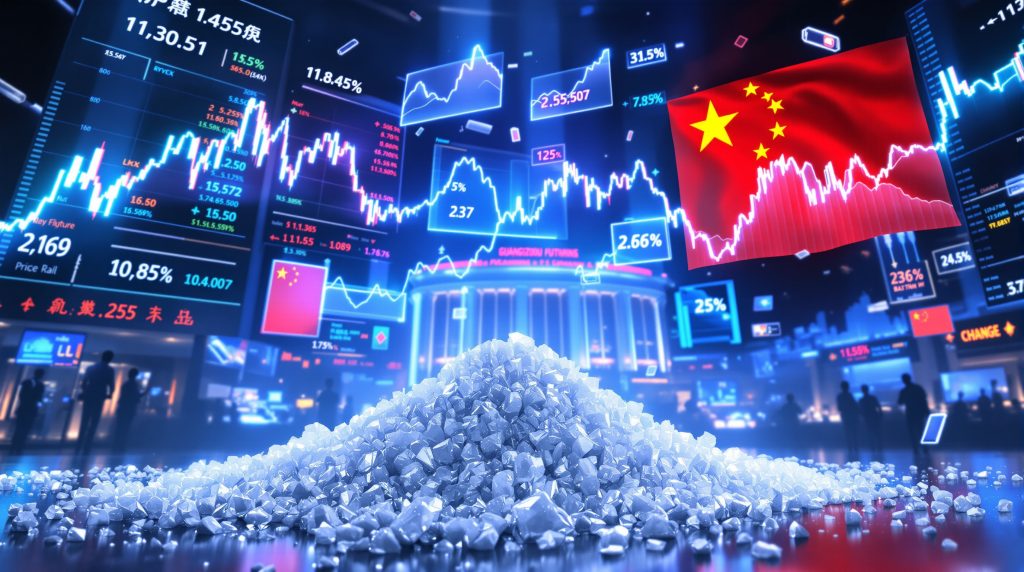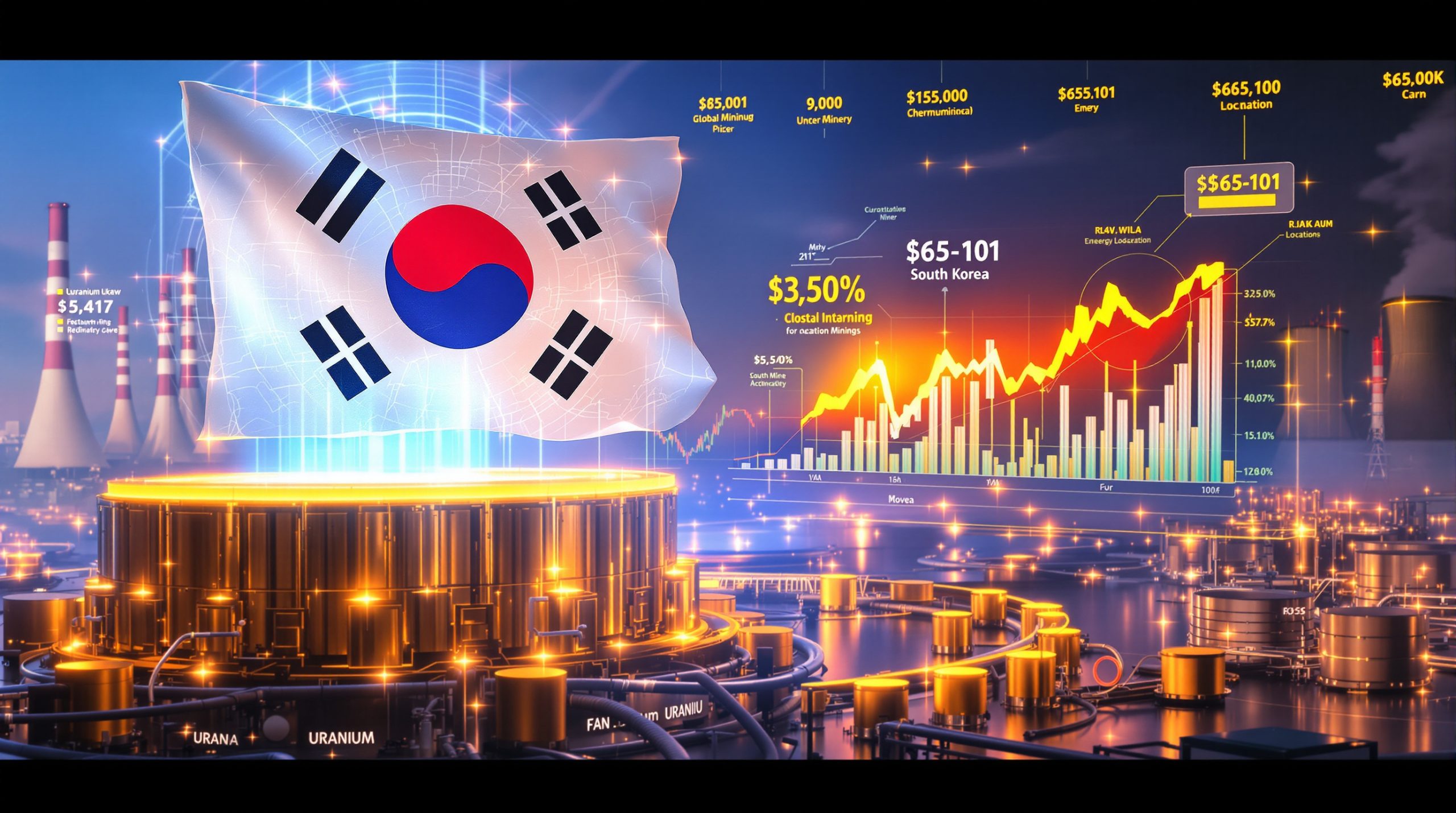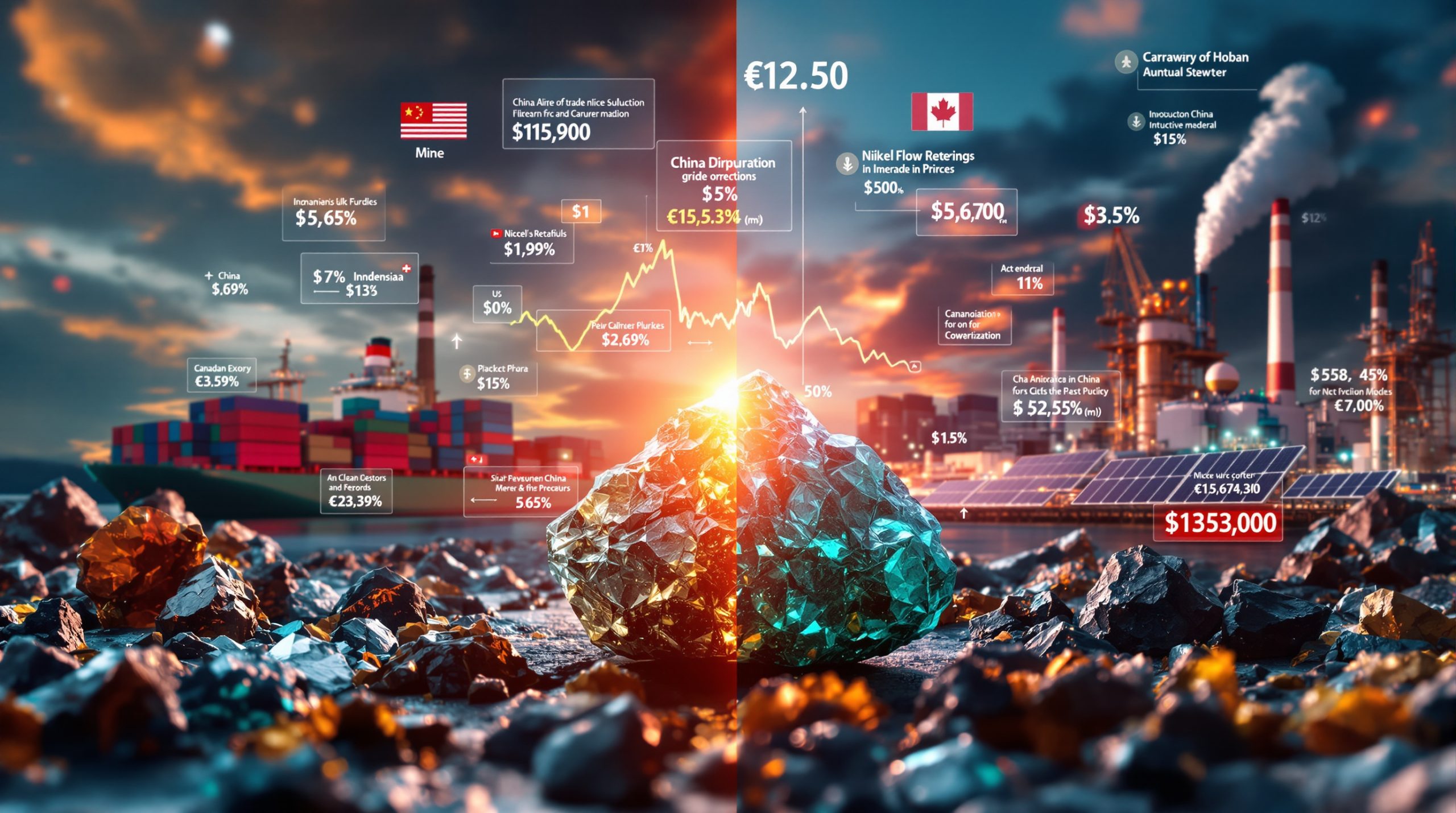Understanding the Chinese Lithium Market: Trading Volatility and Supply Challenges
The Chinese lithium market has experienced unprecedented turbulence in recent months, drawing global attention as prices swing dramatically amid supply uncertainties and speculative trading. With lithium being a critical component in electric vehicle batteries, these market dynamics have far-reaching implications for the global lithium market and EV manufacturing sector.
What's Driving Chinese Lithium Trading Volatility?
Chinese lithium trading has reached extraordinary levels of activity and volatility, creating both opportunities and challenges for market participants. The combination of supply constraints, regulatory shifts, and speculative interest has created perfect conditions for extreme price movements.
Record-Breaking Trading Activity
The Guangzhou Futures Exchange witnessed its busiest period in July 2025 since the lithium contract launched in 2023. Trading volumes surged to all-time highs as market participants rushed to take positions amid uncertainty about future supply conditions. According to Bloomberg News, open interest—the number of outstanding bets on prices—also reached record levels, with this momentum continuing well into August.
Daily price swings have frequently hit exchange-imposed limits, triggering a series of regulatory interventions designed to cool the market. The exchange has been forced to implement multiple measures to control what many observers consider excessive speculation.
Price Fluctuations Reach Extreme Levels
Price movements in recent months illustrate the extraordinary volatility gripping the market:
- Prices surpassed ¥80,000 ($11,135) per ton in July before retreating to ¥67,840 by month-end
- August witnessed a dramatic 30% price surge to over ¥90,000 before moderating to 21% monthly gains
- Price fluctuations frequently triggered daily limit mechanisms
In response to these wild swings, the Guangzhou Exchange implemented three separate control measures in July alone, including position caps, trading fee adjustments, and stricter enforcement of price limit mechanisms. These interventions reflect growing concern about market stability and the potential for disruptive speculation.
"Chinese commodity exchanges have a very high share of participation from speculative or individual investors—much higher than commodity exchanges outside of China—which can lead to greater volatility on a daily basis," noted Przemek Koralewski, global head of market development at Fastmarkets.
Why Is the Yichun Supply Situation Creating Market Uncertainty?
Supply disruptions in China's key lithium production regions have become a critical factor driving market volatility, with regulatory developments creating particular uncertainty about future production capacity.
Production Disruptions in China's Lithium Hub
In early August 2025, battery manufacturing giant Contemporary Amperex Technology Co. Ltd. (CATL) halted operations at a major mining facility in Yichun after failing to renew its mining permit. This shutdown sent shockwaves through the market, as the Yichun region in Jiangxi province represents one of China's most significant lithium production centers.
The suddenness of the closure caught many market participants by surprise, particularly given CATL's prominence in the battery supply chain. The company's mining operations in Yichun have been a substantial contributor to domestic lithium supply, making the permit renewal failure particularly significant for market sentiment.
Regulatory Environment Tightening
The CATL mine closure has triggered broader concerns about Beijing's approach to lithium mining oversight. Market analysts note that this development suggests a potential tightening of regulatory scrutiny across the sector, with possible implications for other nearby projects.
This regulatory uncertainty has created a battleground between market bulls, who see supply constraints supporting higher prices, and bears, who believe current price levels are unsustainable given the longer-term supply outlook. The situation remains fluid, with market participants closely monitoring regulatory signals for indications of future policy direction.
Several factors have contributed to this heightened regulatory focus:
- Environmental impact concerns from rapid mining expansion
- Safety standards enforcement after several widely-reported incidents
- Quality control issues affecting downstream battery production
- Resource conservation priorities from central planning authorities
How Does China's Financial Market Environment Impact Lithium Trading?
The lithium market doesn't exist in isolation—broader trends in Chinese financial markets have significantly influenced trading patterns and investor behavior in the lithium futures space.
The "Anti-Involution" Effect
A notable phenomenon known as "anti-involution" has swept through Chinese financial markets in recent months, influencing trading patterns across multiple asset classes including lithium futures. This concept—which broadly refers to resistance against diminishing returns despite increased effort—has manifested in market behavior characterized by heightened speculation and contrarian positioning.
According to Bloomberg News, this theme has contributed to the spike in futures activity for lithium, with traders increasingly willing to take speculative positions based on short-term supply concerns rather than long-term fundamentals. The result has been amplified price movements that sometimes appear disconnected from physical market conditions.
Individual investors represent a significantly higher percentage of participants compared to non-Chinese exchanges, creating a market dynamic more susceptible to sentiment shifts and momentum trading. This composition contrast helps explain why price volatility on the Guangzhou Exchange often exceeds what's observed in physical lithium markets.
Exchange Intervention Measures
The Guangzhou Futures Exchange has responded to excessive volatility with multiple regulatory tools:
- Position caps limiting the size of new positions traders can establish
- Trading fee adjustments designed to discourage speculative activity
- Price limit mechanisms that halt trading when daily moves exceed predetermined thresholds
These interventions highlight the delicate balance exchange operators must maintain between allowing price discovery and preventing disruptive market behavior. Despite these measures, price volatility has remained elevated, suggesting the underlying supply concerns and speculative interest continue to dominate market sentiment.
What Makes the Guangzhou Futures Exchange Unique for Lithium Trading?
The Guangzhou Futures Exchange has quickly established itself as the global focal point for lithium price discovery, though its structure and participant composition create distinctive market dynamics.
Market Composition and Behavior
A defining characteristic of the Guangzhou Exchange is its high proportion of speculative and individual investors compared to international commodity exchanges. This participant mix contributes to several observable market behaviors:
- Greater daily price volatility than physical lithium markets
- More pronounced reaction to news events and supply disruptions
- Higher trading volumes relative to physical delivery
- Frequent testing of daily price limits
Market experts note that this composition creates both opportunities and challenges. While the enhanced liquidity benefits all market participants, the increased volatility can complicate risk management for commercial users attempting to hedge physical positions.
Contract Specifications and Influence
The Guangzhou Exchange specializes in lithium carbonate futures, trading a refined form of lithium used directly in EV battery production. This specificity makes the contract particularly relevant for battery manufacturers and EV producers looking to manage input cost risk.
"Guangzhou's exchange undoubtedly has a role in how the lithium market transacts," noted market development expert Koralewski. "Ultimately, it's in the discretion of market participants to decide if they want to be exposed to it."
The exchange has become increasingly influential in global lithium price formation despite its volatility, with pricing from Guangzhou futures contracts often referenced in physical supply contracts and market analysis. This influence has grown as China continues to dominate both lithium processing and EV battery manufacturing.
What's the Outlook for Chinese Lithium Markets?
Market participants and analysts remain divided on the longer-term outlook for Chinese lithium markets, though most expect the current extreme volatility to eventually moderate.
Short-Term Volatility Expectations
Analysts broadly expect elevated price volatility to persist in the near term. According to Citigroup analysts cited by Bloomberg News, the market's "current sensitivity to policy uncertainty around supply cuts and related news flow" will likely keep price volatility elevated during the next couple of months.
Several factors contribute to this volatility outlook:
- Ongoing uncertainty about regulatory decisions affecting mining permits
- Potential for additional production disruptions in key regions
- Continued speculative interest from retail investors
- Seasonality in demand patterns from battery manufacturers
Market sensitivity to supply-related news remains exceptionally high, with even minor developments capable of triggering significant price movements. This creates challenging conditions for commercial users attempting to manage procurement strategies.
Supply-Demand Balance Projections
The current modest domestic supply deficit is widely expected to reverse in coming months as production normalizes and new capacity comes online. Industry experts anticipate:
- Production resumption at several temporarily idled facilities
- Gradual regulatory clarity improving operational certainty
- New extraction technologies improving recovery rates
- Continued investment in processing capacity expansion
Most analysts view the recent price surge as temporary rather than signaling a fundamental shift in market dynamics. The longer-term outlook suggests a return to the structural oversupply conditions that characterized the market before recent disruptions, though the timeline for this transition remains uncertain.
Disclaimer: The lithium market is subject to significant volatility and uncertainty. The projections discussed represent current analyst expectations but may not accurately predict future market conditions. Investors should conduct thorough research before making investment decisions based on market forecasts.
How Does This Volatility Impact the Global EV Supply Chain?
The ripple effects from Chinese lithium trading spikes amid volatility and supply concerns extend throughout the global electric vehicle supply chain, creating challenges for manufacturers, suppliers, and investors.
Battery Manufacturing Implications
For battery manufacturers, price uncertainty complicates critical business processes:
- Procurement strategies must account for potential dramatic price shifts
- Contract negotiations increasingly include flexibility mechanisms
- Inventory management becomes more complex amid price volatility
- Margin protection requires sophisticated hedging approaches
EV producers face parallel challenges in cost forecasting and pricing strategies. The unpredictability of key input costs makes financial planning more difficult, particularly for manufacturers with longer production cycles or fixed-price sales contracts.
Increasingly, supply chain participants are implementing risk management strategies designed specifically for volatile lithium markets. These include:
- Geographic diversification of supply sources
- Vertical integration through mining investments
- Development of technical alternatives reducing lithium dependency
- Implementation of sophisticated financial hedging programs
Investment Considerations
For investors and financial market participants, Chinese lithium market volatility presents both opportunities and risks. Market positioning increasingly requires:
- Careful assessment of appropriate exposure levels to Chinese lithium futures
- Trading strategies focused on volatility rather than directional price moves
- Enhanced risk management protocols given extreme price movements
- Deeper understanding of physical market fundamentals
Physical market participants face growing pressure to implement hedging strategies that protect against adverse price movements. This has driven increased interest in options and other derivative instruments that can provide downside protection while maintaining upside potential.
The table below summarizes key risk factors across the lithium supply chain:
| Supply Chain Segment | Primary Risk Factors | Mitigation Approaches |
|---|---|---|
| Mining Operations | Regulatory uncertainty, Permit delays | Geographic diversification, Government relations |
| Processors/Refiners | Price volatility, Feedstock quality | Flexible contracts, Technical optimization |
| Battery Manufacturers | Input cost fluctuations, Supply security | Vertical integration, Strategic inventories |
| EV Producers | Cost predictability, Margin pressure | Long-term contracts, Alternative technologies |
FAQs About Chinese Lithium Trading
Why has lithium trading in China become so volatile?
The combination of supply uncertainty in the Yichun region, regulatory changes, and high speculative trading participation has created perfect conditions for extreme price volatility. The shutdown of a major CATL mine due to permit issues has particularly fueled market uncertainty, while the "anti-involution" theme in Chinese financial markets has attracted speculative interest beyond typical commodity market participants.
How does Chinese lithium trading compare to other commodity markets?
Chinese commodity exchanges typically have much higher participation from individual and speculative investors compared to international exchanges. According to market experts, this participant composition leads to greater price volatility and more frequent extreme price movements. The lithium market has been especially susceptible to these dynamics given its strategic importance in China's electric vehicle manufacturing ecosystem.
What measures has the Guangzhou Futures Exchange taken to control volatility?
The exchange has implemented multiple interventions, including position caps limiting new positions, adjustments to trading fees, and price limit mechanisms that trigger when daily moves exceed certain thresholds. Despite these measures, volatility has remained elevated, suggesting the underlying supply concerns and speculative interest continue to dominate market sentiment.
Will lithium prices continue rising through 2025?
Most analysts predict the recent price surge will be short-lived. As mines resume production and regulatory clarity improves, the current modest supply deficit is expected to flip to oversupply, likely moderating prices in the coming months. However, the timing and extent of this correction remain subject to significant uncertainty, particularly given the potential for additional regulatory developments affecting production capacity.
How should businesses in the EV supply chain manage lithium price volatility?
Companies throughout the EV supply chain are increasingly implementing comprehensive risk management strategies, including:
- Diversifying supply sources across multiple regions
- Developing more flexible procurement contracts
- Maintaining strategic inventory buffers
- Implementing financial hedging programs
- Investing in R&D for lithium industry innovations
- Exploring vertical integration opportunities
The effectiveness of these approaches varies based on each company's position in the supply chain, financial resources, and risk tolerance.
What role does speculation play in the Chinese lithium market?
Speculation has become a significant factor in Chinese lithium futures trading, with individual investors representing a much larger proportion of market activity than in most international commodity exchanges. This speculative interest amplifies price movements and can sometimes create disconnects between futures prices and physical market fundamentals. However, the resulting liquidity also supports more efficient price discovery and risk transfer functions for companies interested in battery metals investment and critical minerals energy security.
With ongoing research into battery recycling breakthrough technologies, the industry hopes to reduce some of the supply pressures currently amplifying market volatility.
Want to Stay Ahead of the Next Major Mineral Discovery?
Discovery Alert's proprietary Discovery IQ model delivers instant notifications when significant mineral discoveries are announced on the ASX, giving investors a crucial time advantage before the market fully reacts. Explore how major discoveries have historically generated substantial returns by visiting the Discovery Alert discoveries page today.




